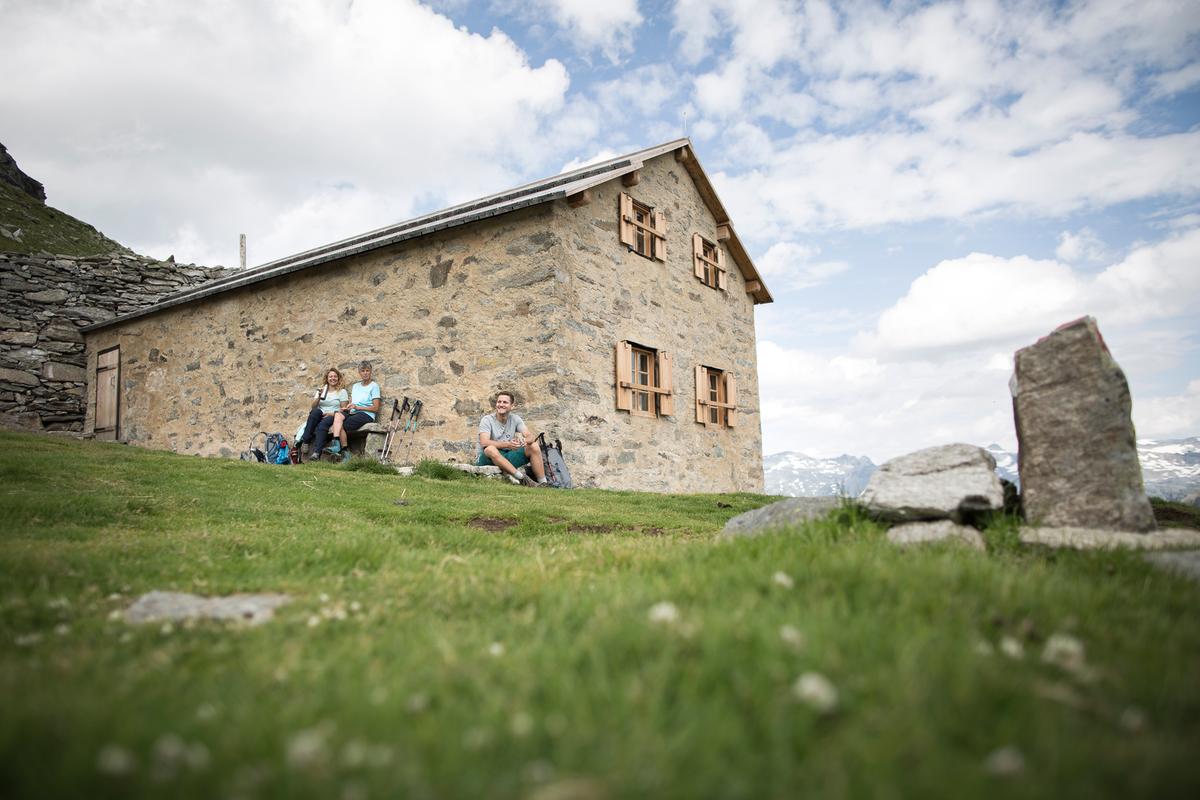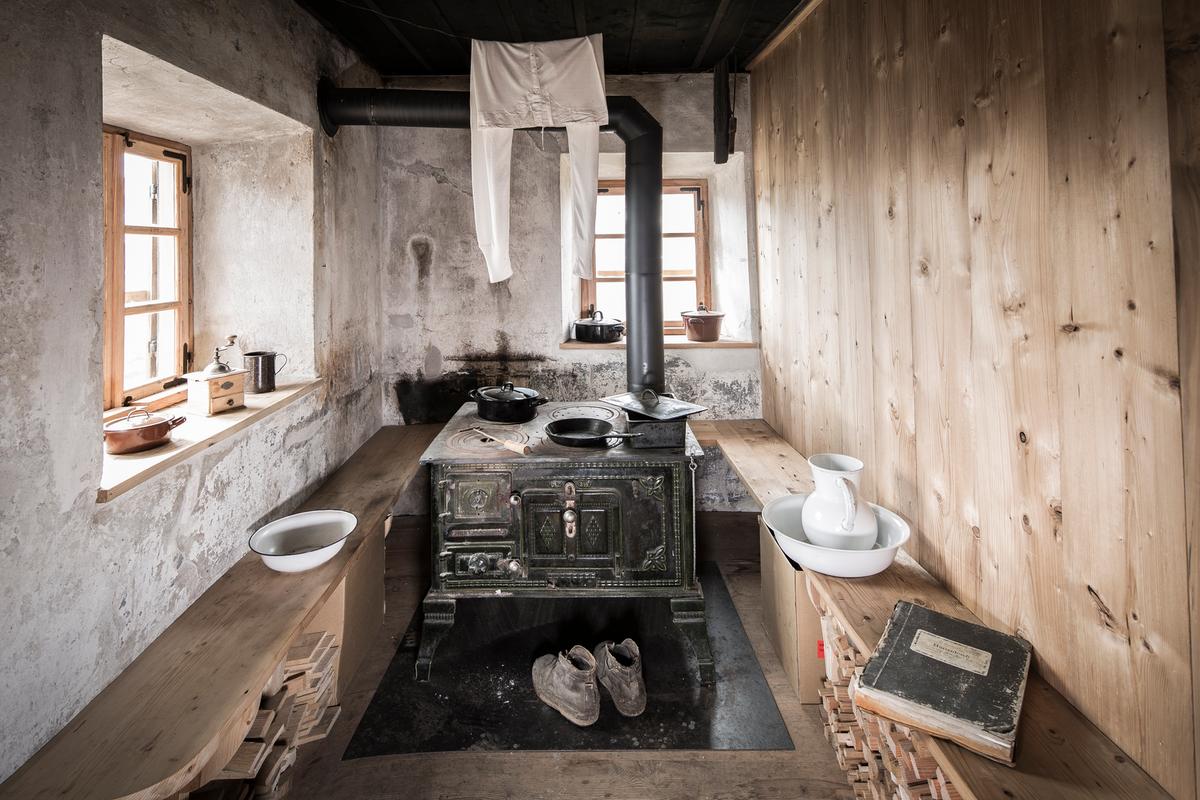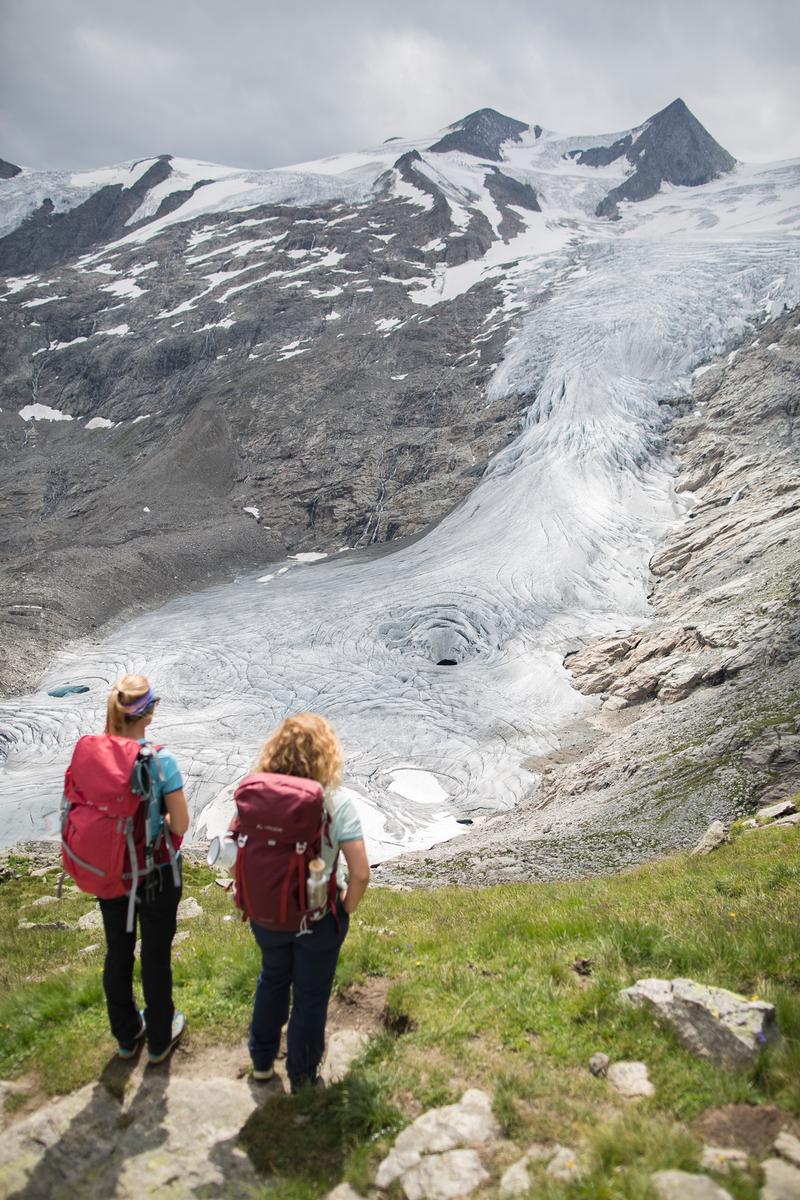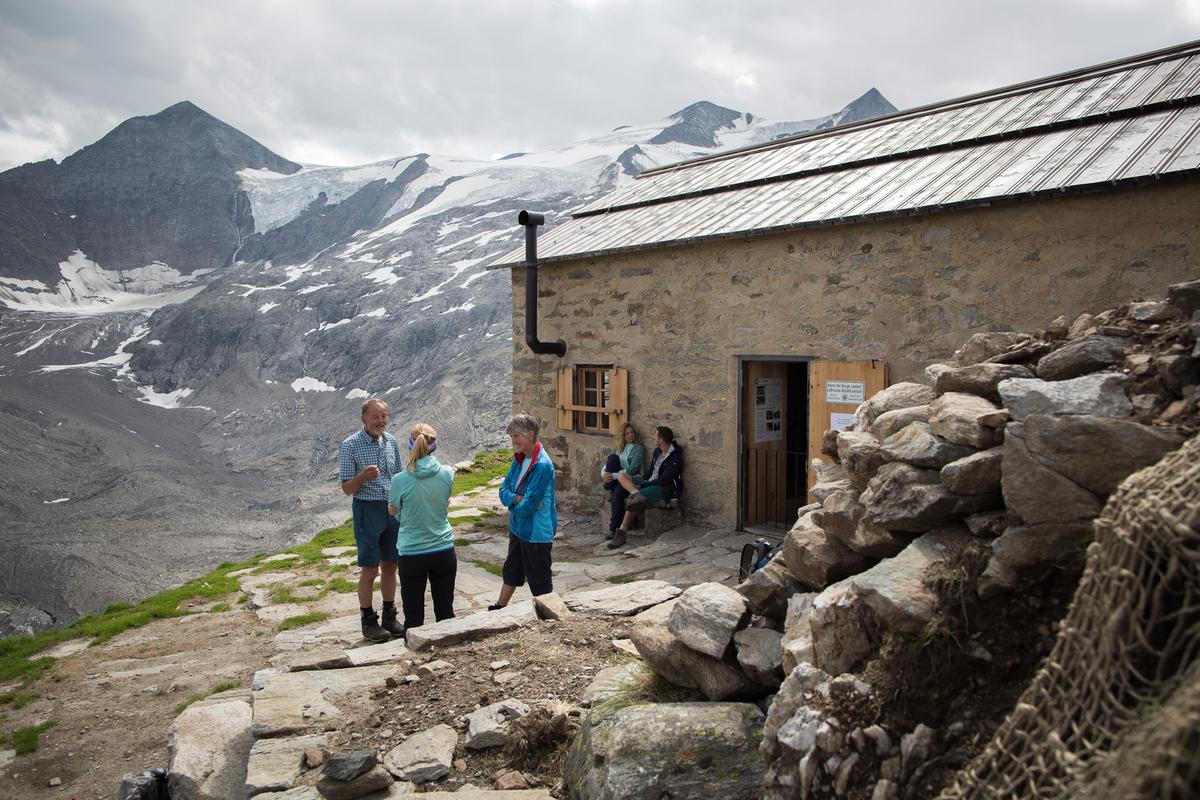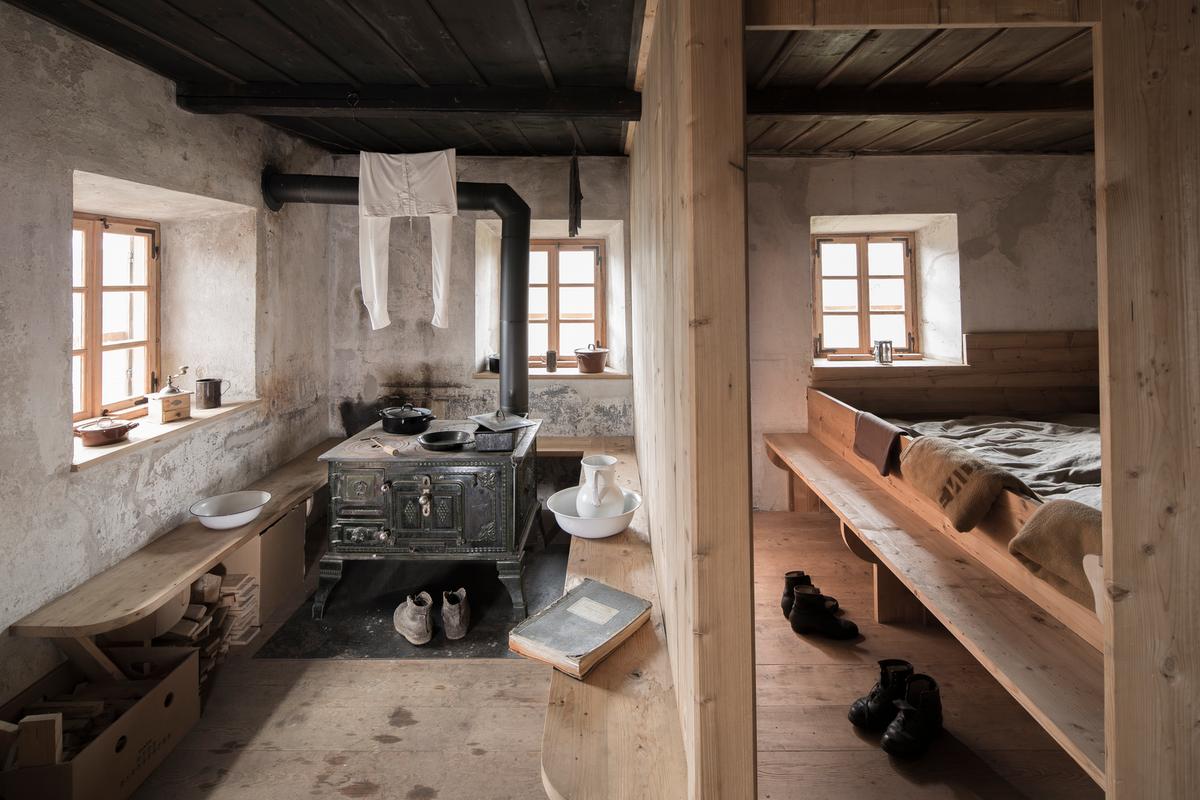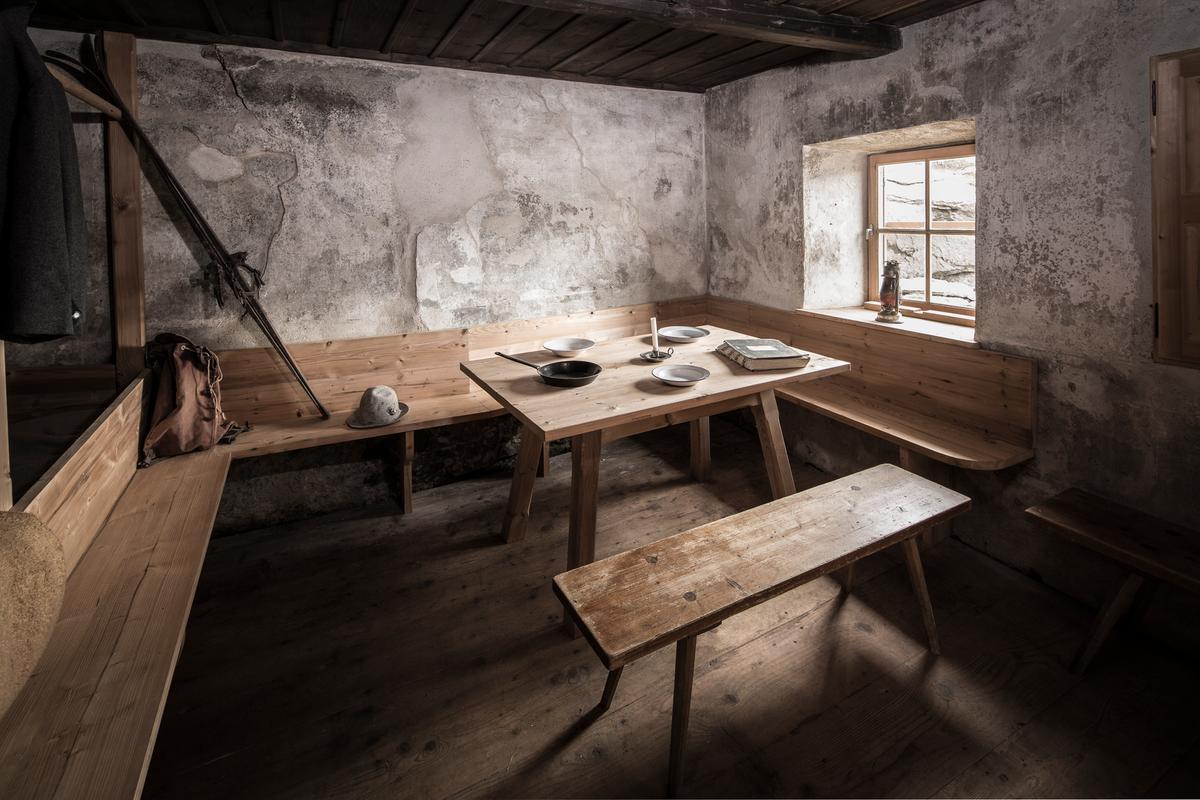Photo DAV / Jens Klatt
The Old Prague Lodge – Witness to a Colorful Past!
Up there, finally! The Old Prague Lodge. Frankly, I am quite relieved to have arrived at last. The final bit of the trail proved to be longer than expected and my feet started bothering me. On top, the weather is closing in. Hopefully I will make it to the lodge in time before it starts to pour!
Mountain hikes are a thing of beauty! But imagine a world without all the small and not so small, technical and non-technical mountaineering equipment. And without mountain lodges. Alpine sports and vacations would quickly turn into an actual survival trip. And let’s be honest: no one can really want that.
When the early alpinists went about their business here in the High Tauern during the second half of the 19th century, their adventures were more often than not a matter of life and death. However, they knew it was not to stay this way. One of the things making their lives easier was having a roof above their heads. That’s why the German Alpine Association, which was founded in 1869, soon started to build and maintain the first lodges. One of the first of its kind was the Old Prague Lodge, named after the Prague section of the German Alpine Association, which, under guidance of their chairman Johann Stüdl, was responsible for the lodge’s construction. Imagine what the construction of a lodge like this in the alpine mountains must have meant. Every single piece of construction material had to be tediously dragged up here. The construction itself could only be accomplished during the summer months when the weather cooperated. In 1872 the lodge was finally completed and was put into service. In order to offer a better view on the glacier, the lodge had not been built on the previously planned, more secure location. This decision took its toll when some four years later the inclemency of the weather showed its strength. An avalanche destroyed the lodge beyond repair. Having learned from this disaster, the lodge was rebuilt a year later at the initially planned spot. Everything up the mountain again, hoping the weather plays along. However, the feat was accomplished! In the very same year, 1877, a Prague Lodge was back in its place at the foot of the Großvenediger mountain. It was kept in service for over 140 years until 2009, when the service was withdrawn due to its old age. In addition, the New Prague Lodge, built in 1904 just a short way up the mountain, was able to compensate for the closure of its older sibling.
Yet, the Old Prague Lodge is a real crown witness of the 150 year long infrastructural development of the alpine mountains. And as such it is still cherished. It is under monumental protection and has been restored to its original structural condition. Nowadays, you might want to head to the New Prague Lodge for overnight lodging – but in order to catch a glimpse of the past and what it meant to be a lodge’s guest over a hundred years ago, a visit to the Old Prague Lodge is an absolute must.
The Prague Lodge and Hohe Tauern National Park
Aaa! What a wonderful mountain panorama! One never gets tired of looking at this. You’re saying the journey is the reward? I strongly agree. There is nothing greater than being out in the beautiful open countryside. But this view - that puts the cherry on the cake! And I will tell you: the Hohe Tauern national park offers many of those panoramic views, considering it’s one of the largest nature reserves in the whole of Middle Europe! The Venediger Group stretches to all sides of the Großvenediger. Alpine mountains exactly as you would imagine them - ideal for mountaineering, hiking and skiing. Everything the heart desires in the respective season. But there is a lot more to discover: a little further down you can find the Gschlöss valley with its Alpine meadows. If you hike through it towards the Großvenediger mountain and choose to take the glacier path “Innergeschlöss”, you can catch a glimpse of the eye of god. It’s the truth! It’s the name of a quaint moorland pond, looking just like a big green eye. The path leads you to the “Schlatenkees” and its grand glacier landscape. By not later than this moment one realizes how intertwined two things are: the enjoyment of this landscape and the beautiful nature on the one hand, the concern about its preservation on the other. Due to climate change, the glaciers in our magnificent Alps are melting at an accelerating rate. Those two elements, enjoyment of nature and its protection have been key concerns of our Alpine Associations for many years. They have made an effort to ensure that visits to the alpine region don’t damage the beauty of the landscape. Sustainable tourism has become a very important topic for us! By the way: the Alpine Associations have been active in the Hohen Tauern region for over 150 years. Don’t believe it? Turn around and look at the Old Prague Lodge, one of the association’s oldest Lodges. Even though you can’t find shelter for the night here anymore, you can still get a feeling for how these rustic lodges used to be furnished and equipped. The interior takes you back to the year 1877. Imagine: despite its compact size it accommodated up to 45 people! Now hike a bit further up the mountain and you will arrive at the New Prague Lodge. Here, the landlord will gladly offer you a bed for the night. But just before you close the door to the lodge behind you, please take another look around: Aaa! Isn’t that view just breathtaking?
Johann Stüdl and the Prague section of the Alpine Association
Ladies and gentlemen, let us give him three cheers: Johann Stüdl! The second half of the 19th century was a time of unrest. The industry was flourishing, the railway was introduced extensively and villages suddenly turned into cities. Those changes came too quickly for many people, though. A countermovement emerged where people were fascinated by the beauty and tranquility of nature. Especially in Bohemia, Austria and Southern Germany this meant: turning towards the mountains – the more untamed nature appeared, the more beautiful people thought it was. Johann Stüdl, a merchant’s son from Prague, was fascinated by this new way of experiencing nature - and by the Alps. Before there was any kind of touristic infrastructure, he and his brother hiked through the “Hohe Tauern” mountains, amazed by its irresistible beauty and pondering ways of how to make the landscape more accessible for like-minded individuals. To him, a reliable roof above the hiker’s head when needed, had top priority. That’s why, in the 1860s, he started investing in the first mountain lodges surrounding the Großvenediger and Großglockner mountains of his own accord and out of his own pocket. On top of that, with the help of equally enthusiastic friends, he launched the first section of the German Alpine Association. The Association was conceived as an umbrella organization of independent regional subdivisions, in line with the political conditions of a not yet unified Germany at the time. Shortly after, Stüdl himself founded the Prague section he presided over for five decades. However, the “Hohe Tauern” mountains remained his primary subject of desire. In the same year, he prompted the inception of the first mountain guide association in “Kals am Großglockner”. Furthermore, he kept pushing boundaries in terms of opening new mountain trails and accommodation possibilities. In 1872, Stüdl had a lodge built at the foot of the Großvenediger mountain, named “Prague lodge” after his home section of the Alpine association. In the same way, the “Clara lodge” in the Umbal valley can be traced back to his influence. It was named after the wife of Stüdl’s wine merchant, who stepped in as a new investor. Stüdl was not only active in the region of the Venediger mountains, though. He also initiated and financed the construction of numerous other lodges such as the “Stüdl Lodge” and the “Glorer Lodge” on the Großglockner mountain and the “Paver Lodge” on the Ortler mountain. Only because a long time ago, careful thought has been given to the safety of the mountain trails, it is possible for all of us to enjoy our time in the mountains at ease. It’s the Alpine associations of Germany, Austria and South Tyrol that preserve this heritage.
